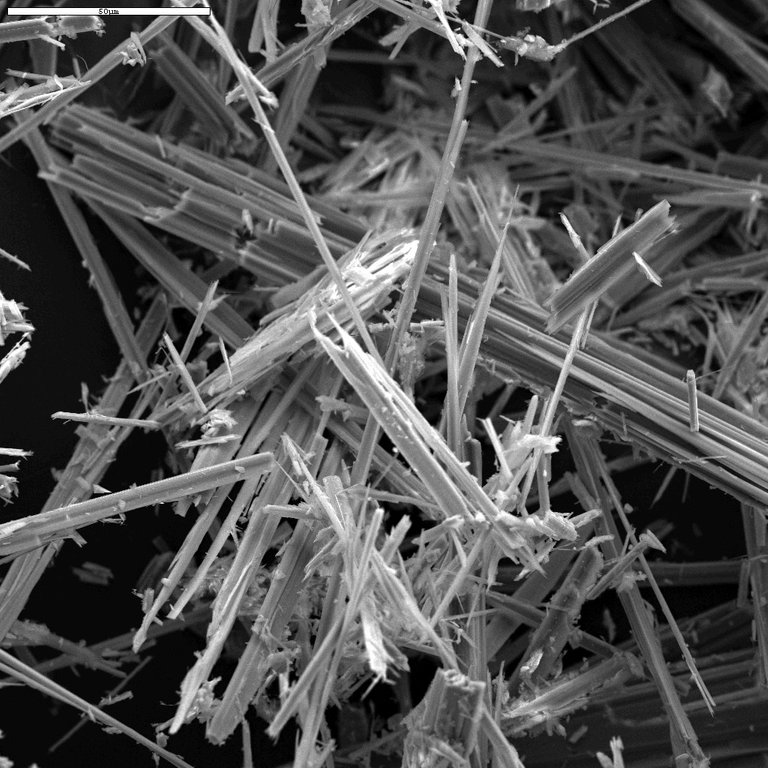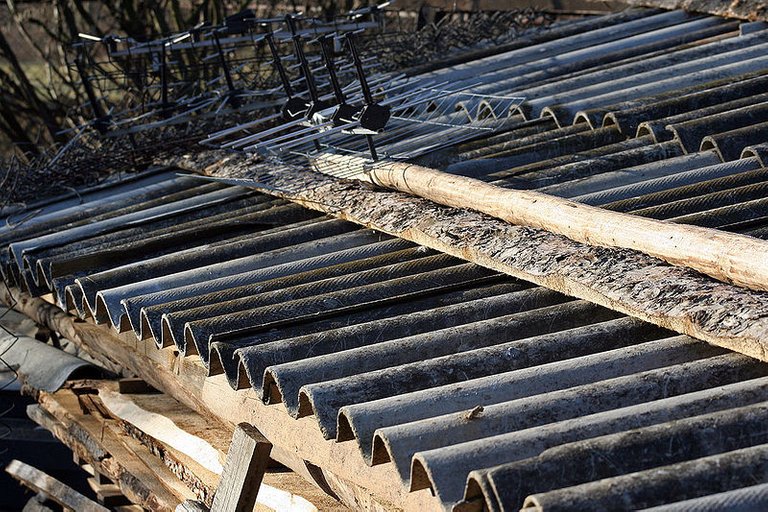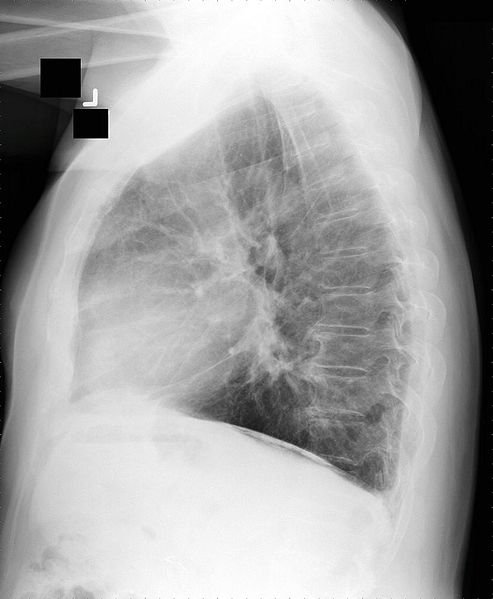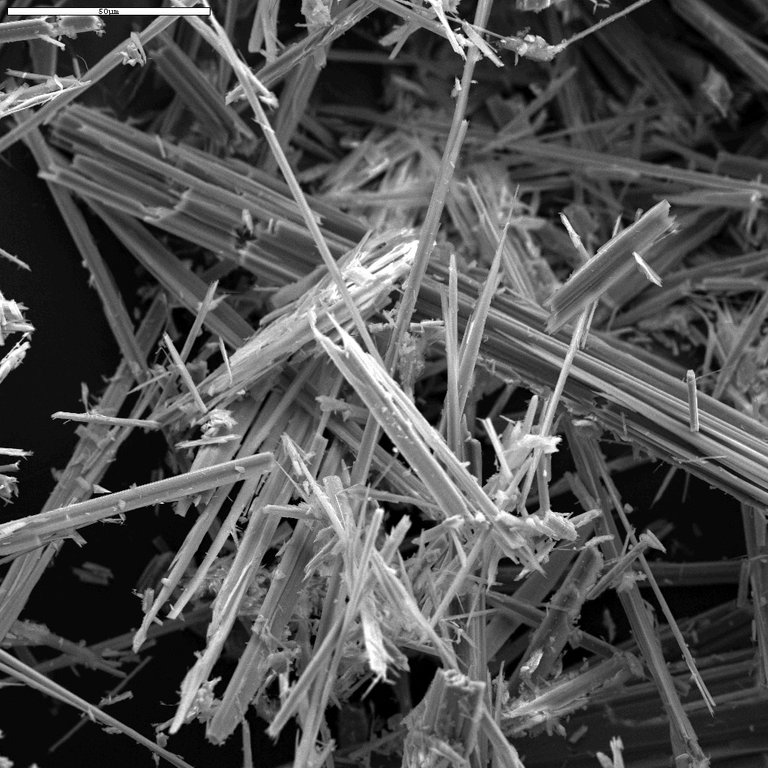Storia dell'Amianto, il denaro uccide / History of Asbestos, money kills
History
Asbestos is a form of asbestos processing with incredible insulating capabilities, which is why it was widely used in the construction industry and beyond. Asbestos was discovered in the 1930s, while its pathogenicity a few decades later, but although the dangerousness of this substance was known, laws restricting or prohibiting its use and production were slowed down for other decades. This caused the death of hundreds of thousands of people in the name of trade and money.
The opposition to the enactment of these laws was implemented by the large industrial asbestos and construction companies, which saw the suspension or limitation of asbestos as an economic danger and a possible bankruptcy.

Asbestos is made up of blunt fibres which are damaged at cellular level. It is used for the production of insulating material and an important characteristic of this material is that it does not only address its pathogenicity to professionals, but also that they frequent environments insulated with asbestos (eg public places and means of transport).
In Italy, the only factory that produced asbestos was the Eternit factory in Casale Monferrato. Studies have shown that various types of cancer of the respiratory system and not only, but especially mesothelioma pleural, had increased alarmingly in the area.
Legal cases
a family filed a lawsuit against Eternity, because the wife of a worker working in this factory had developed pleural mesothelioma and was dead. The accusatory system required the worker to be exposed to asbestos at the factory, but he was forced to use PPE, worked with glasses, a mask and a completely closed suit.
At the end of the day, the man brought home the clothes to wash, so the wife came into contact with asbestos much more than her husband. That's why she developed the tumor and died.
In the 80's there was a scandal due to the fact that the trains were insulated with asbestos, so it was necessary to find a place to store them and then proceed to the reclamation. However, no one accepted them in the station of their country and for this reason they were constantly moved from one place to another. They remained around Italy with all the windows sealed with metal sheets, because inside there was asbestos.
In the United States, the pathogenicity of asbestos was proven in 1950, but the results were only made known in 1960. In Italy, from 1988 to 1994, 6140 deaths were calculated, correlated to exposure to asbestos. Only in 1994 was the production and use of asbestos banned by law. The peak of production was in the '70s, while the peak of deaths in the '80s, this is because, as in the case of cigarette smoke, the pathogenetic process of exposure to asbestos has a very long time and has long-term effects.

Production and Sale, the Law upside down
Europe had imposed on member countries to stop the production of asbestos, but in Italy the Eternit of Casale Monferrato made sure to stop the production, but continue with the sale of asbestos while stocks last. In fact, in the two years preceding the entry into force of the law, the factory subjected its workers to gruelling shifts to produce huge quantities of eternity, which were then stored and sold for many years to follow.
Today
Today the dangerous phase of exposure to occupational risk is over, because the Eternit factory has been closed, asbestos is no longer produced and processed. Instead, attention is paid to the surveillance of ex-exposures and to prevent non-occupational exposures, environmental pollution. Asbestos carcinogenesis can take 10 or 20 years, so those who stopped working in the factory 20 years ago are not yet completely out of danger. Moreover, despite the fact that the production and sale of asbestos has been stopped, in Italy there is still a very large quantity of this material, also because the reclamation of the territories and structures where asbestos is present has enormous costs.
In Italy, 22 years after the promulgation of laws prohibiting the processing of asbestos (1994), 25,000 tons of this substance remain to be disposed of and 60000 km of drinking water pipes are still insulated with asbestos. The latest forecasts refer to 2025/2030 to begin to record a decline in complaints, since 1994, when the law was issued. The risk of exposure to asbestos will therefore have to be considered as over several more years.
Pathology
- Affected organs: asbestos is inhaled, absorbed and accumulates in the lungs and gastro-intestinal tract.
- Pathological manifestations: Determines cellular damage, which induces inflammation, which is transformed into phenomena
degenerative inflammatory bronchial level. These degenerative phenomena trigger an abnormal reparative process, which leads, in the long term after tens of years, to the development of cancer of the larynx, stomach, lungs and pleura.
The main pathological effect of asbestos is pleural mesothelioma, a very rare and incurable tumour. It is not a tumor of the pulmonary epithelial cells, but develops between the pulmonary surface and the pleuras that surround them. It has been calculated that 80% of pleural mesotheliomas are caused by exposure to asbestos. The progression of the disease from diagnosis is very rapid, leaving little time for effective treatment. In the past, every 5 years the incidence of mesothelioma increased by 15% in asbestos processing areas. Exposure to asbestos is not just an occupational risk, as asbestos has been widely used in the production of buildings and transport equipment.
Among the pathological manifestations due to exposure to asbestos we can find:
- in the medium term: inflammatory-degenerative phenomena at the bronchial level
- Long-term: development of laryngeal, stomach, lung and pleural cancer. Pleural mesothelioma, peritoneal mesothelioma, lung cancer, asbestosis (a medium-term disease, mainly characterized by bronchitis), pleural plaques, or preneoplastic lesions, which are not used as such because they are difficult to diagnose and in most cases when they are already diagnosed too late, can also occur.
The figure shows a chest CT scan of a patient with asbestosis. The accumulation of asbestos fibres in the lungs can be seen.

Asbestos fibres cannot be attacked by antibodies, they cannot be phagocytised by macrophages, so the only thing the immune system can do is to isolate them. Although covered with fibrin and eosinophils, the fibers maintain their blunt potential and in the acts of inhalation and exhalation, the movement of the pulmonary parenchyma causes these fibers to cause cellular damage leading to alveolar necrosis, caused by the previous accumulation of asbestos fibers in the lung. It should be remembered that cellular damage causes the release of lytic enzymes and therefore, regardless of the original asbestos fiber, tissue necrosis widens due to previously released lytic enzymes.
The body opposes the continuous damage in the pulmonary parenchyma with an inflammatory process and then begins a reparative process, which consists not only of the pulmonary epithelial cells that replicate (parenchymal regeneration), but there is always also a share of connective reintegration. In this case, before arriving at the tumor manifestation, one encounters an enormous pulmonary fibrosis, which will subsequently cause pulmonary insufficiency, another clinical manifestation of asbestosis.
Asbestos fibres tend to accumulate in the deepest part of the lung due to the force of gravity that pushes them down. They can pierce the surface and accumulate between the lung and the pleura.
Storia
L'Amianto è una forma di lavorazione dell’asbesto con capacità isolanti incredibili, per questo fu molto utilizzato nell’industria edile e non solo. L’amianto venne scoperto negli anni’30, mentre la sua patogenicità qualche decennio dopo, ma nonostante fosse risaputa la pericolosità di questa sostanza, le leggi che ne limitassero o vietassero l’utilizzo e la produzione vennero rallentate per altri decenni. Questo causò la morte di centinaia di migliaia di persone in nome del commercio e del denaro.
L’opposizione alla promulgazione di queste leggi fu attuata dalle grandi aziende industriali di amianto e di costruzioni edili, che videro nella sospensione o nella limitazione dell’amianto, un pericolo economico e un possibile fallimento.

L’asbesto è formato da fibre contundenti che a livello cellulare determinano il loro danneggiamento. È usato per la produzione di materiale isolante e una caratteristica importante di questo materiale è che esso non rivolge la sua patogenicità solo agli addetti ai lavori, ma anche che frequentano ambienti coibentati con asbesto (es. luoghi pubblici e mezzi di trasporto).
In Italia l’unica fabbrica che produceva asbesto era lo stabilimento Eternit di Casale Monferrato. Degli studi hanno dimostrato che vari tipi di tumore all’apparato respiratorio e non solo, ma soprattutto mesotelioma pleurico, erano aumentati in modo allarmante nella zona.
Casi Giuridici
una famiglia ha intentato una causa contro la Eternit, perché la moglie di un operaio che lavorava in questa fabbrica aveva sviluppato mesotelioma pleurico ed era morta. L’impianto accusatorio prevedeva che l’operaio fosse esposto all’amianto in fabbrica, ma era costretto a usare DPI , lavorava con occhiali, mascherina e tuta completamente chiusa.
Al termina della giornata, l’uomo portava a casa gli indumenti da lavare, in questo modo la moglie entrava in contatto con l’amianto molto più del marito. Per questo ha sviluppato il tumore ed è morta.
Negli anni’80 si è verificato lo scandalo dovuto al fatto che i treni fossero coibentati con asbesto, per questo serviva trovare un luogo per immagazzinarli e procedere poi alla bonifica. Nessuno però li accettava nella stazione del proprio paese e per questo erano continuamente spostati da un posto all’altro. Rimasero in giro per l'Italia con tutti i finestrini sigillati con lastre di metallo, poiché all’interno c’era amianto.
Negli Stati Uniti la patogenicità dell’amianto è stata provata nel 1950, ma i risultati sono stati resi noti solo nel 1960. In Italia dal 1988 al 1994 sono state calcolate 6140 morti, correlabili all’esposizione all’amianto. Solo nel 1994 si è proceduto a proibire per legge la produzione e l’uso di amianto. Il picco di produzione è stato negli anni ‘70, mentre il picco di morti negli anni ’80, questo perché come nel caso del fumo di sigaretta, il processo patogenetico dell’esposizione ad amianto ha tempi lunghissimi e presenta effetti a lungo termine.

Produzione e Vendita, la Legge capovolta
l’Europa aveva imposto ai paesi membri di bloccare la produzione di amianto, ma in Italia la Eternit di Casale Monferrato fece in modo di bloccare sì la produzione, ma continuare con la vendita di amianto fino ad esaurimento scorte. Infatti la fabbrica nei due anni precedenti all’entrata in vigore della legge, sottopose i suoi operai a turni massacranti per produrre quantità enormi di eternit, che poi vennero immagazzinate e vendute per molti anni a seguire.
Oggi
Oggi è esaurita la fase di pericolosità dell’esposizione al rischio lavorativo, perché la fabbrica Eternit è stata chiusa, non si produce e non si lavora più l’amianto. Si pone invece l’attenzione alla sorveglianza sugli ex esposti e a prevenire le esposizioni non professionali, l’inquinamento ambientale. La cancerogenesi da amianto può impiegare 10 o 20 anni, quindi chi ha smesso di lavorare in fabbrica 20 anni fa non è ancora completamente fuori pericolo. Inoltre, nonostante la produzione e la vendita dell’amianto siano state bloccate, in Italia c’è ancora una grandissima quantità di questo materiale, anche perché la bonifica dei territori e delle strutture dove è presente amianto, ha costi enormi.
In Italia, a 22 anni dalla promulgazione di leggi che proibiscono la lavorazione dell’amianto (1994), rimangono 25.000 tonnellate di questa sostanza da smaltire e 60000 km di condotte di acqua potabile sono ancora isolate con amianto. Le ultime previsioni fanno riferimento al 2025/2030 per iniziare a registrare un calo di denunce, a partire dal 1994, quando è stata emanata la legge. Quindi per considerare concluso il rischio dell’esposizione all’amianto dovranno passare ancora diversi anni.
Patologia
• Organi colpiti: l’asbesto è inalato, assorbito e si accumula a livello polmonare e gastro-intestinale.
• Manifestazioni patologiche: Determina danno cellulare, che induce infiammazione, la quale si trasforma in fenomeni
infiammatori degenerativi a livello bronchiale. Questi fenomeni degenerativi innescano un processo riparativo abnorme, il quale porta, a lungo termine dopo decine di anni, allo sviluppo di tumore alla laringe, allo stomaco, ai polmoni e alle pleure.
Il principale effetto patologico dell’asbesto è il mesotelioma pleurico, un tumore rarissimo ed incurabile. Esso non è un tumore delle cellule epiteliali polmonari, ma si sviluppa a cavallo tra la superficie polmonare e le pleure che li circondano. È stato calcolato chel’80% dei mesoteliomi pleurici sono causate da esposizioni all’asbesto. La progressione della malattia dalla diagnosi è velocissima, lasciando ben poco tempo per affrontare delle terapie efficaci. In passato ogni 5 anni l’incidenza di mesotelioma aumentava del 15% nelle zone di lavorazione dell’amianto. L’esposizione all’asbesto non è da essere considerato solo un rischio occupazionale, in quanto questa sostanza è stata utilizzata largamente per la produzione di edifici e mezzi di trasporto.
Tra le manifestazioni patologiche dovute all’esposizione all’asbesto possiamo trovare:
• a medio termine: fenomeni infiammatori-degenerativi a livello bronchiale
• a lungo termine: sviluppo di tumore alla laringe, allo stomaco ai polmoni e alle pleure. Possono manifestarsi anche mesotelioma pleurico, mesotelioma peritoneale, carcinoma polmonare, asbestosi (malattia a medio termine, caratterizzata principalmente da bronchiti), placche pleuriche, ovvero lesioni preneoplastiche, che non sono utilizzate come tali perché difficili da diagnosticare e nella maggior parte dei casi quando le si diagnostica è già troppo tardi.
In figura è riportata una Tac toracica di un paziente con asbestosi. Si possono notare gli accumuli di fibre di asbesto a livello polmonare.

Le fibre di asbesto non possono essere attaccate dagli anticorpi, non riescono ad essere fagocitate dai macrofagi, quindi l’unica cosa che il sistema immunitario può fare è isolarle. Pur essendo ricoperte da fibrina ed eosinofili, le fibre mantengono il loro potenziale contundente e negli atti di inspirazione ed espirazione, il movimento del parenchima polmonare fa in modo che queste fibre determinino il danno cellulare portando a necrosi alveolare, causata dal pregresso accumulo di fibre di asbesto a livello polmonare. Bisogna ricordare che il danno cellulare determina la liberazione degli enzimi litici e quindi, indipendentemente dalla fibra di asbesto originale, la necrosi tissutale si allarga a causa degli enzimi litici precedentemente rilasciati.
Al danno continuo nel parenchima polmonare, l’organismo si oppone con un processo infiammatorio e successivamente inizia un processo riparativo, il quale non consta solo delle cellule epiteliali polmonari che replicano (rigenerazione parenchimale), ma c’è sempre anche una quota di reintegrazione connettivale. In questo caso prima di arrivare alla manifestazione tumorale, si va incontro ad una enorme fibrosi polmonare, la quale successivamente determinerà insufficienza polmonare, un’altra manifestazione clinica dell’asbestosi.
Le fibre di asbesto tendono ad accumularsi nella zona più profonda del polmone a causa della forza di gravità che le spinge verso il basso. Esse possono bucare la superficie ed accumularsi tra il polmone e le pleure.
Fonti/ Sources
This post was selected, voted and shared by the discovery-it curation team in collaboration with the C-Squared Curation Collective. You can use the #Discovery-it tag to make your posts easy to find in the eyes of the curator. We also encourage you to vote @c-squared as a witness to support this project.